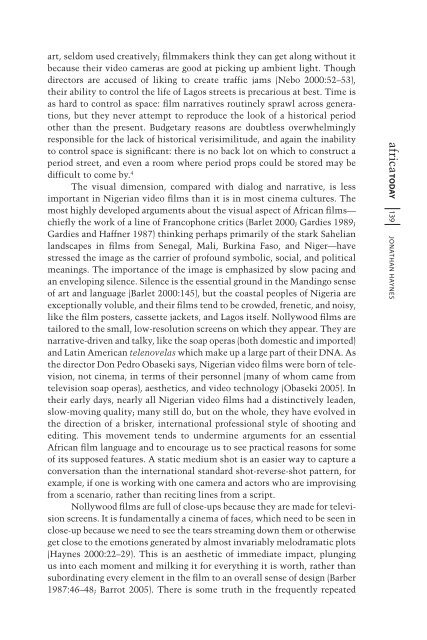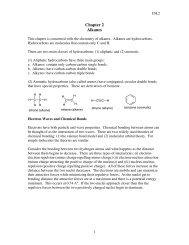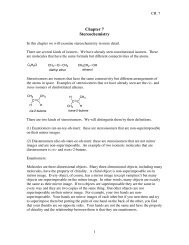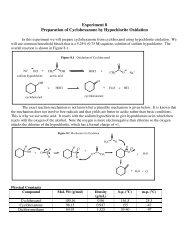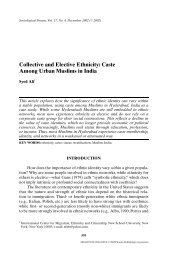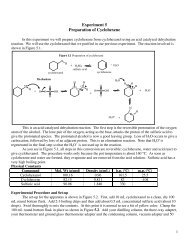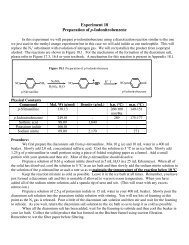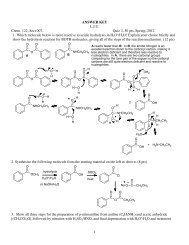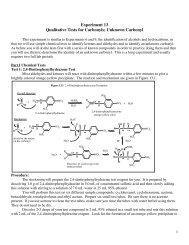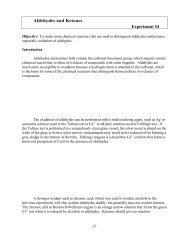Lagos is the ground of the films, not just in the sense that ... - myweb
Lagos is the ground of the films, not just in the sense that ... - myweb
Lagos is the ground of the films, not just in the sense that ... - myweb
You also want an ePaper? Increase the reach of your titles
YUMPU automatically turns print PDFs into web optimized ePapers that Google loves.
art, seldom used creatively; filmmakers th<strong>in</strong>k <strong>the</strong>y can get along without itbecause <strong>the</strong>ir video cameras are good at pick<strong>in</strong>g up ambient light. Thoughdirectors are accused <strong>of</strong> lik<strong>in</strong>g to create traffic jams (Nebo 2000:52–53),<strong>the</strong>ir ability to control <strong>the</strong> life <strong>of</strong> <strong>Lagos</strong> streets <strong>is</strong> precarious at best. Time <strong>is</strong>as hard to control as space: film narratives rout<strong>in</strong>ely sprawl across generations,but <strong>the</strong>y never attempt to reproduce <strong>the</strong> look <strong>of</strong> a h<strong>is</strong>torical periodo<strong>the</strong>r than <strong>the</strong> present. Budgetary reasons are doubtless overwhelm<strong>in</strong>glyresponsible for <strong>the</strong> lack <strong>of</strong> h<strong>is</strong>torical ver<strong>is</strong>imilitude, and aga<strong>in</strong> <strong>the</strong> <strong>in</strong>abilityto control space <strong>is</strong> significant: <strong>the</strong>re <strong>is</strong> no back lot on which to construct aperiod street, and even a room where period props could be stored may bedifficult to come by. 4The v<strong>is</strong>ual dimension, compared with dialog and narrative, <strong>is</strong> lessimportant <strong>in</strong> Nigerian video <strong>films</strong> than it <strong>is</strong> <strong>in</strong> most c<strong>in</strong>ema cultures. Themost highly developed arguments about <strong>the</strong> v<strong>is</strong>ual aspect <strong>of</strong> African <strong>films</strong>—chiefly <strong>the</strong> work <strong>of</strong> a l<strong>in</strong>e <strong>of</strong> Francophone critics (Barlet 2000; Gardies 1989;Gardies and Haffner 1987) th<strong>in</strong>k<strong>in</strong>g perhaps primarily <strong>of</strong> <strong>the</strong> stark Sahelianlandscapes <strong>in</strong> <strong>films</strong> from Senegal, Mali, Burk<strong>in</strong>a Faso, and Niger—havestressed <strong>the</strong> image as <strong>the</strong> carrier <strong>of</strong> pr<strong>of</strong>ound symbolic, social, and politicalmean<strong>in</strong>gs. The importance <strong>of</strong> <strong>the</strong> image <strong>is</strong> emphasized by slow pac<strong>in</strong>g andan envelop<strong>in</strong>g silence. Silence <strong>is</strong> <strong>the</strong> essential <strong>ground</strong> <strong>in</strong> <strong>the</strong> Mand<strong>in</strong>go <strong>sense</strong><strong>of</strong> art and language (Barlet 2000:145), but <strong>the</strong> coastal peoples <strong>of</strong> Nigeria areexceptionally voluble, and <strong>the</strong>ir <strong>films</strong> tend to be crowded, frenetic, and no<strong>is</strong>y,like <strong>the</strong> film posters, cassette jackets, and <strong>Lagos</strong> itself. Nollywood <strong>films</strong> aretailored to <strong>the</strong> small, low-resolution screens on which <strong>the</strong>y appear. They arenarrative-driven and talky, like <strong>the</strong> soap operas (both domestic and imported)and Lat<strong>in</strong> American telenovelas which make up a large part <strong>of</strong> <strong>the</strong>ir DNA. As<strong>the</strong> director Don Pedro Obaseki says, Nigerian video <strong>films</strong> were born <strong>of</strong> telev<strong>is</strong>ion,<strong>not</strong> c<strong>in</strong>ema, <strong>in</strong> terms <strong>of</strong> <strong>the</strong>ir personnel (many <strong>of</strong> whom came fromtelev<strong>is</strong>ion soap operas), aes<strong>the</strong>tics, and video technology (Obaseki 2005). In<strong>the</strong>ir early days, nearly all Nigerian video <strong>films</strong> had a d<strong>is</strong>t<strong>in</strong>ctively leaden,slow-mov<strong>in</strong>g quality; many still do, but on <strong>the</strong> whole, <strong>the</strong>y have evolved <strong>in</strong><strong>the</strong> direction <strong>of</strong> a br<strong>is</strong>ker, <strong>in</strong>ternational pr<strong>of</strong>essional style <strong>of</strong> shoot<strong>in</strong>g andedit<strong>in</strong>g. Th<strong>is</strong> movement tends to underm<strong>in</strong>e arguments for an essentialAfrican film language and to encourage us to see practical reasons for some<strong>of</strong> its supposed features. A static medium shot <strong>is</strong> an easier way to capture aconversation than <strong>the</strong> <strong>in</strong>ternational standard shot-reverse-shot pattern, forexample, if one <strong>is</strong> work<strong>in</strong>g with one camera and actors who are improv<strong>is</strong><strong>in</strong>gfrom a scenario, ra<strong>the</strong>r than recit<strong>in</strong>g l<strong>in</strong>es from a script.Nollywood <strong>films</strong> are full <strong>of</strong> close-ups because <strong>the</strong>y are made for telev<strong>is</strong>ionscreens. It <strong>is</strong> fundamentally a c<strong>in</strong>ema <strong>of</strong> faces, which need to be seen <strong>in</strong>close-up because we need to see <strong>the</strong> tears stream<strong>in</strong>g down <strong>the</strong>m or o<strong>the</strong>rw<strong>is</strong>eget close to <strong>the</strong> emotions generated by almost <strong>in</strong>variably melodramatic plots(Haynes 2000:22–29). Th<strong>is</strong> <strong>is</strong> an aes<strong>the</strong>tic <strong>of</strong> immediate impact, plung<strong>in</strong>gus <strong>in</strong>to each moment and milk<strong>in</strong>g it for everyth<strong>in</strong>g it <strong>is</strong> worth, ra<strong>the</strong>r thansubord<strong>in</strong>at<strong>in</strong>g every element <strong>in</strong> <strong>the</strong> film to an overall <strong>sense</strong> <strong>of</strong> design (Barber1987:46–48; Barrot 2005). There <strong>is</strong> some truth <strong>in</strong> <strong>the</strong> frequently repeatedafrica today 139 Jonathan Haynes


